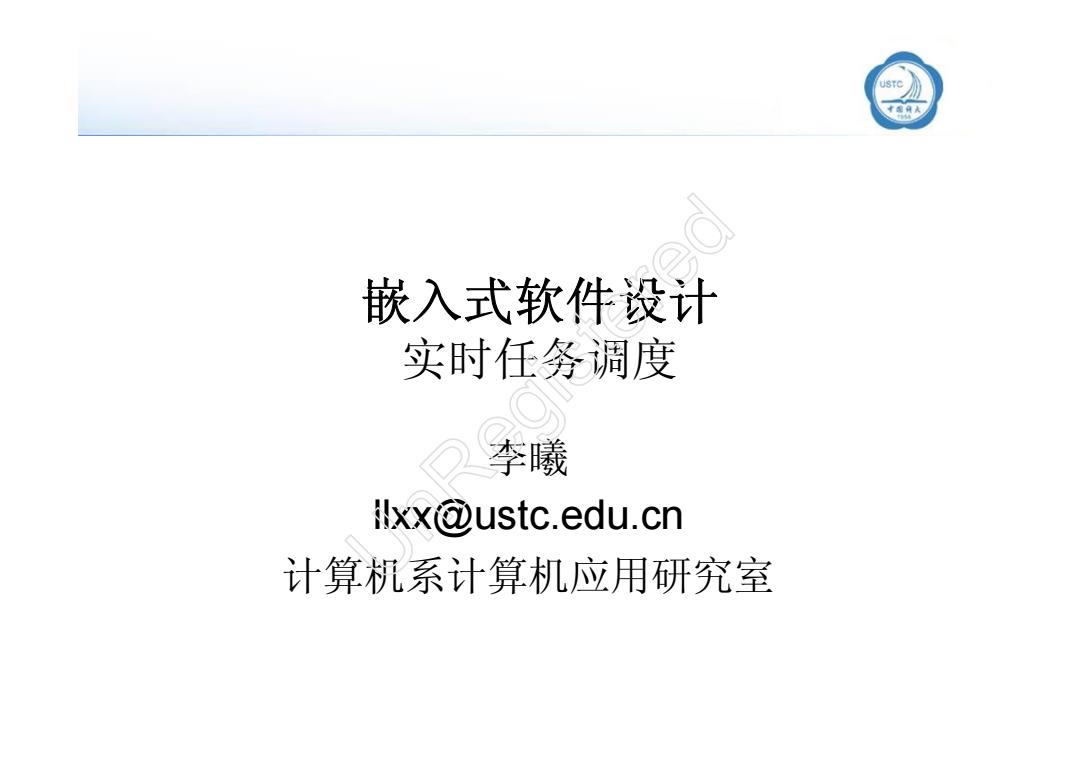
® 嵌入式软件设计 实时任务调度 李曦 ixx@ustc.edu.cn 计算机系计算机应用研究室
嵌入式软件设计 实时任务调度 李曦 llxx@ustc.edu.cn 计算机系计算机应用研究室 UnRegistered
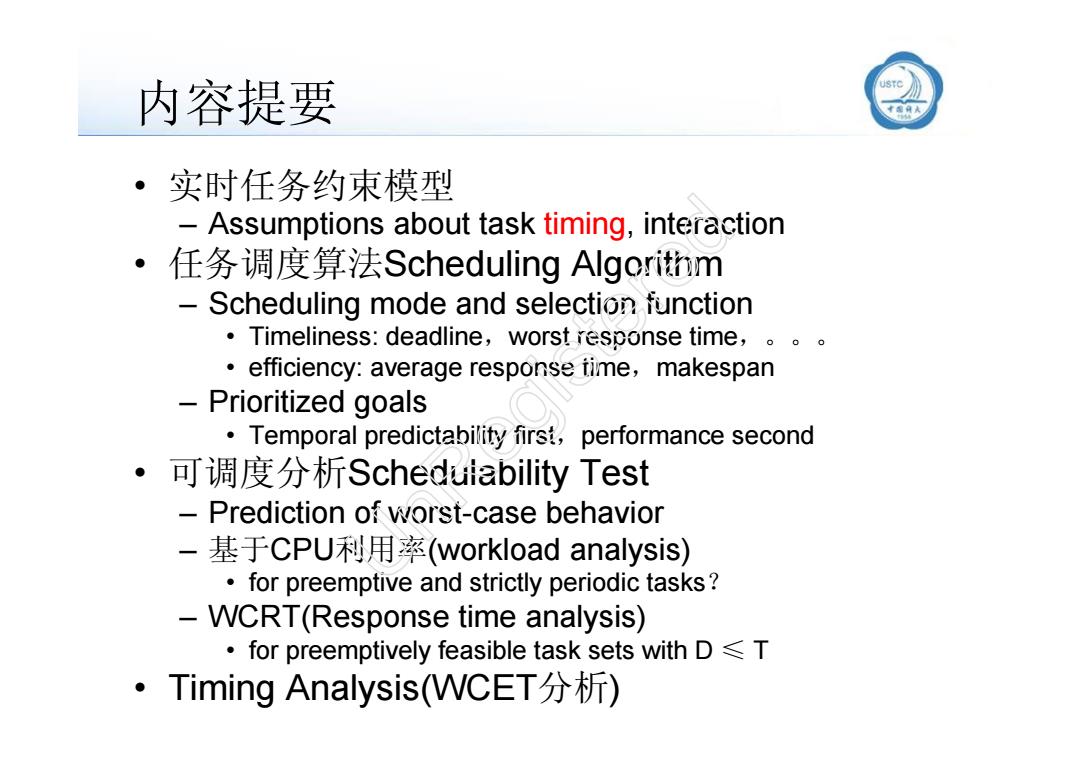
内容提要 ·实时任务约束模型 Assumptions about task timing,interaction 。 任务调度算法Scheduling Algorithm Scheduling mode and selection function ·Timeliness:deadline,worst response time,。。。 efficiency:average response time,makespan -Prioritized goals Temporal predictability first,performance second ● 可调度分析Schedulability Test Prediction of worst-case behavior 一 基于CPU利用率(workload analysis) for preemptive and strictly periodic tasks? WCRT(Response time analysis) ·for preemptively feasible task sets with D≤T ·Timing Analysis(WCET分析)
内容提要 • 实时任务约束模型 – Assumptions about task timing, interaction • 任务调度算法Scheduling Algorithm – Scheduling mode and selection function • Timeliness: deadline,worst response time,。。。 • efficiency: average response time,makespan – Prioritized goals • Temporal predictability first,performance second • 可调度分析Schedulability Test – Prediction of worst-case behavior – 基于CPU利用率(workload analysis) • for preemptive and strictly periodic tasks? – WCRT(Response time analysis) • for preemptively feasible task sets with D ≤ T • Timing Analysis(WCET分析) UnRegistered
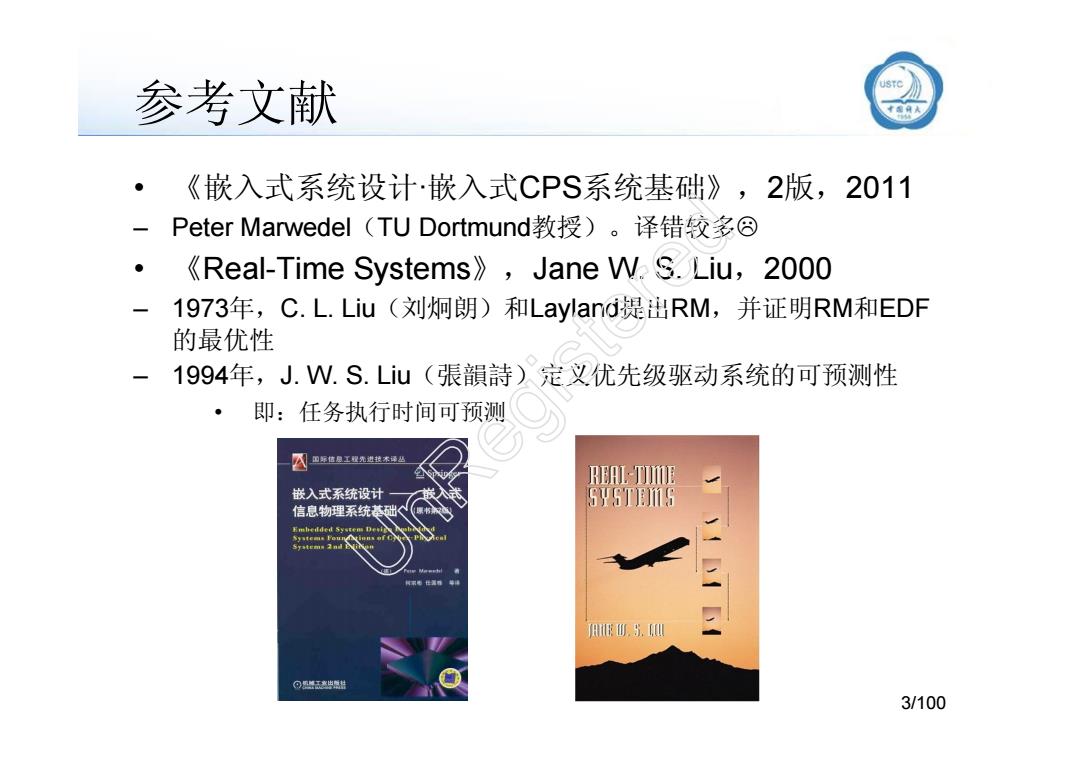
参考文献 ,《嵌入式系统设计嵌入式CPS系统基础》,2版,2011 -Peter Marwedel(TU Dortmund教授)。译错较多⑧ 《Real-Time Systems》,Jane W.S.Liu,2000 1973年,C.L.Liu(刘炯朗)和Layland提出RM,并证明RM和EDF 的最优性 1994年,J.W.S.Lu(張韻詩)定义优先级驱动系统的可预测性 ·即:任务执行时间可预测 REAL-TIME 嵌入式系统设计 5y5T15 信息物理系统, 0,S. ⊙山惠出感相 3/100
3/100 参考文献 • 《嵌入式系统设计·嵌入式CPS系统基础》,2版,2011 – Peter Marwedel(TU Dortmund教授)。译错较多L • 《Real-Time Systems》,Jane W. S. Liu,2000 – 1973年,C. L. Liu(刘炯朗)和Layland提出RM,并证明RM和EDF 的最优性 – 1994年,J. W. S. Liu(張韻詩)定义优先级驱动系统的可预测性 • 即:任务执行时间可预测 UnRegistered
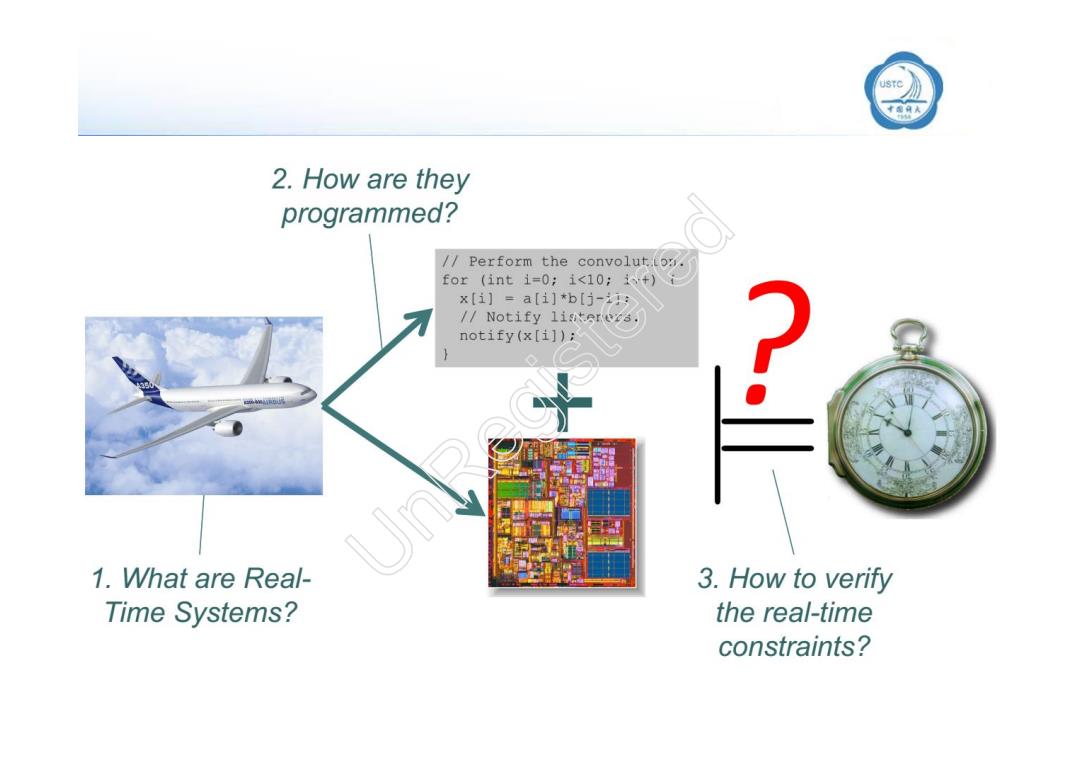
2.How are they programmed? /Perform the convolut..to. for (int i=0;i<10;i+)i x[i]=a[i]*b【j-i /Notify listerezs. notify(x[i]): 1.What are Real- 3.How to verify Time Systems? the real-time constraints?
UnRegistered
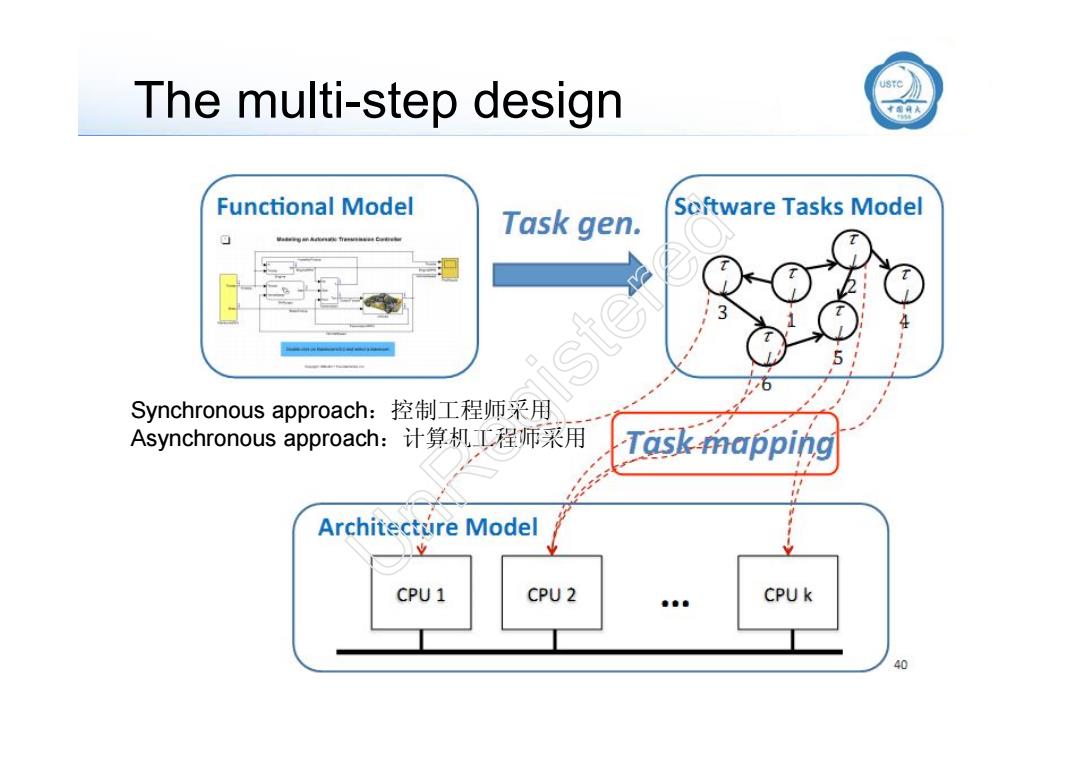
The multi-step design 》 Functional Model Software Tasks Model ◇ Task gen. Synchronous approach:控制工程师采用 Asynchronous approach:计算机L程师采用 Task mapping Architecture Model CPU1 CPU2 意童而 CPUk 40
The multi-step design Synchronous approach:控制工程师采用 Asynchronous approach:计算机工程师采用 UnRegistered